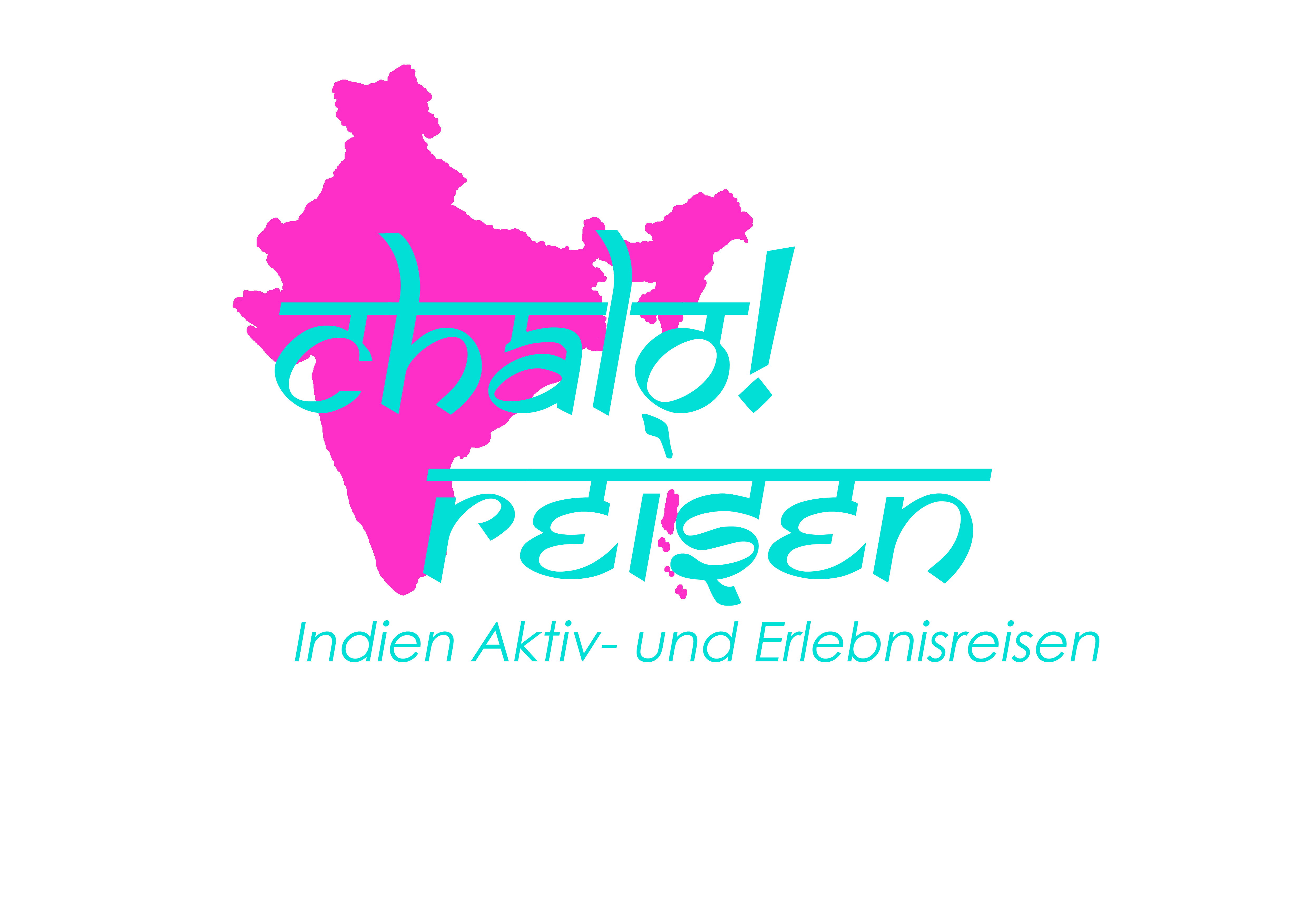Deep in rural Rajasthan, 100 km from Jodhpur, Shri Jasnath Asan is located in the small village of Panchla Siddha. A small ashram belonging to the Shri Jasnath sect. Saint Jasnath is the first guru of a chain of saints who spiritual guiding the Jasnath community for about 500 years.

The disciples of the Jasnath Sect honor their Guru and follow a special Yoga practise in the form of artistic fire dances and the reciting of ragas, five hundred years old songs consisting of only five different composed sounds and are accompanied by drums and bright sounding bells. The sounds are toned by the male followers of the Hindu sect. They have no linguistic meaning, but are much more like sound therapy creating vibrations in the brain, which lead us into meditation and a mentally peaceful state. The dancers and singers march through the western districts of Rajasthan in the months from January to June to honor families, celebrate weddings and births, or consecrate temples with their sacred rituals.

Jogesh Beniwal, 26, a fire dancer and raga singer, has lived in this ashram as a Sewa for eleven years to contribute to the community of the Jasnath Clan. His work is unpaid, but as a Sewa he lives here completely free of charge, is fed and gets clothes donated.

During my time at the Ashram, I had the opportunity to accompany Jogesh to various events, listen to his singing and drumming, and admire his rhythmic movements during the fire dance. The fire dance is spectacular. Without any signs of burns, they run over fire, take the hot embers in their mouths and spew out the fire again. What a show! Here in the districts of the Jasnath community, the spiritual artists are superstars!

I didn’t miss the opportunity to take Jogesh aside after one of his dances in the ashram to ask him about his life in the ashram as a singer, dancer and Sewa.
Since Jogesh hardly speaks English, this conversation was exclusively in Hindi and I am happy that the interview went so well despite my own limited Hindi knowledge.
Hello Jogesh, how did you decide to live this life here in the ashram?
I was fifteen when Guru Ji came to my village of Kharawala in the Barmir district for one of his events. I was absolutely thrilled seeing his singers and dancers and wanted to learn that. At home I lived with my six siblings, five brothers and a sister, I had dropped out of school after eighth grade. At that time I was not interested in learning, it is different today. Here, in the middle of the desert, we have hardly any prospects. I wanted a different life, something of my own.
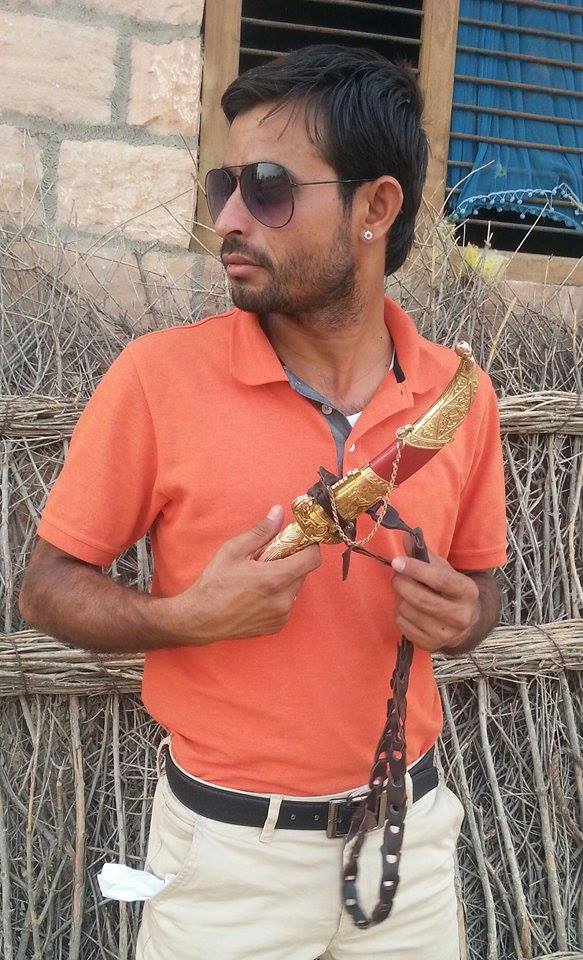
So guru ji took you to the ashram?
yes. In the beginning I lived here as a Sewa and have recreated all the work that is involved in Karma Yoga activities. We cleaned, kept the garden in order, cooked and participated in the evening pujas (Pujas are Hindu prayers in temples with well-decorated ceremonies, prayers and chants). I have grown up in this community and lead a spiritual life here according to the 36 principles of Shri Jasnath. (Principles that lead to a sincere, non-violent, religious and tolerant life. The consumption of meat, alcohol and other drugs is prohibited.).
I lived like that for the first five years. Over time I worked my way up and was allowed to accompany Guru ji as a driver to his events. I watched a lot and so I taught myself the ragas and the dancing.
And then you also took part in the rituals?
yes. At first I only sang for two years, then started dancing. I’ve been doing this for eight years now.
What do you like more, singing or dancing?
I like both. Usually there are either singers or dancers, as both diziplines are not so easy. For the ragas and dancing you need total concentration and presence. To run over the fire, one needs the blessing of Jasnath and must control the mind completely, otherwise it becomes dangerous. I am one of the few, who sings and dances and can’t imagine one without the other!
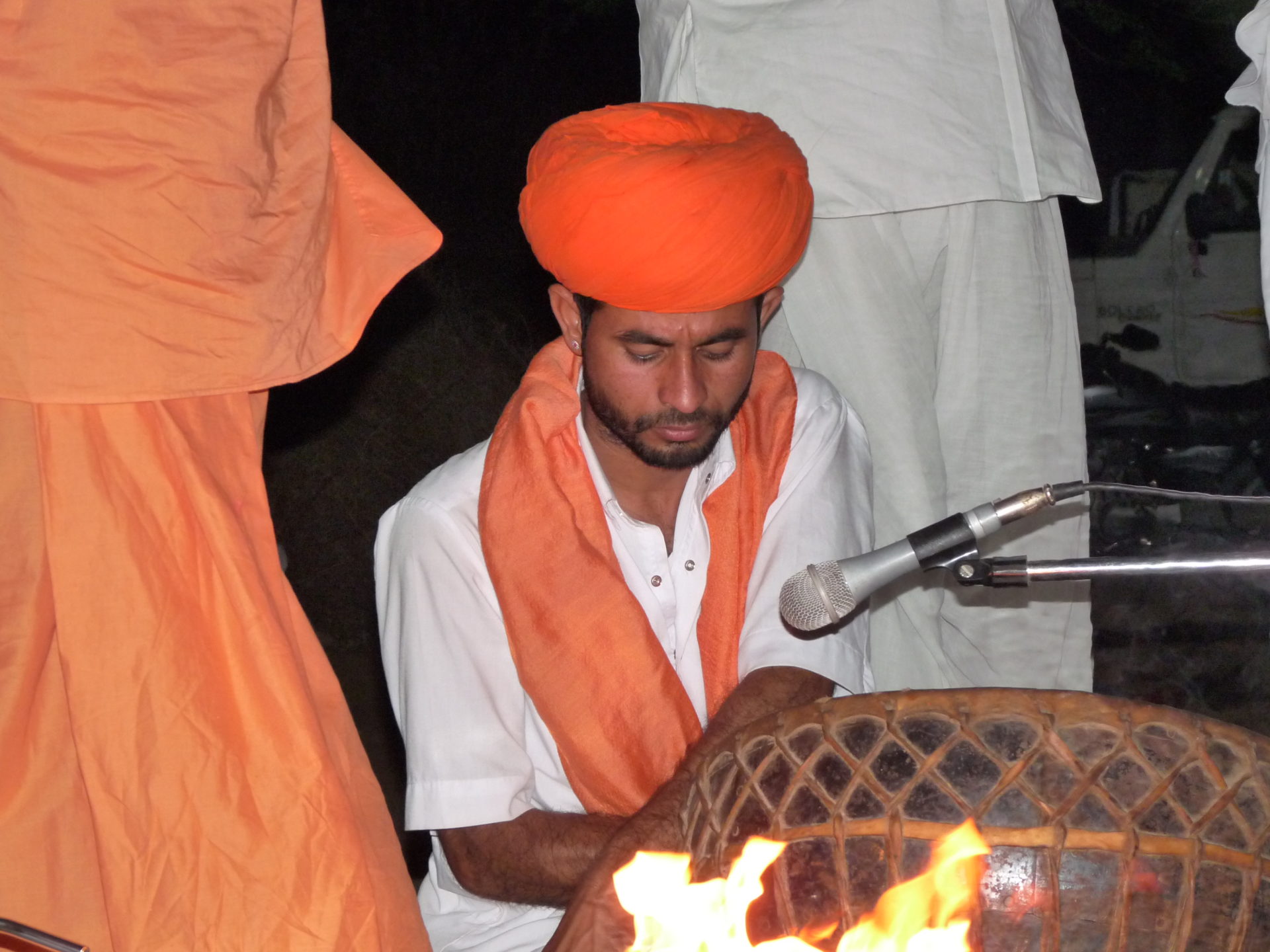
Could I run over the fire?
With a lot of practice, the right attitude and concentration yes. But it would take a lot of time and training, otherwise it will be dangerous. The next time you come back, I’ll teach you!
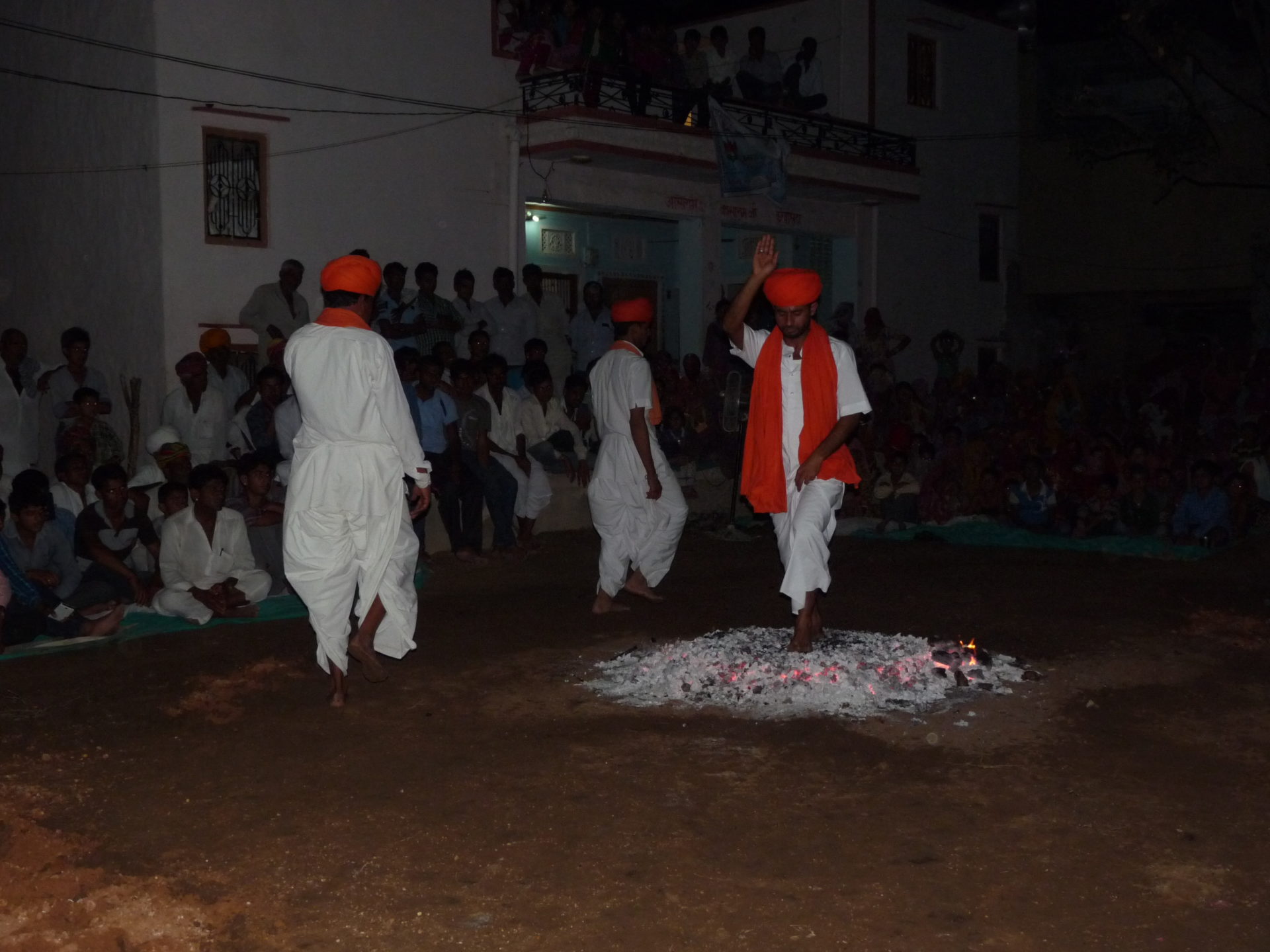
Do you never burn yourself?
No. I’ve never hurt myself and nothing ever happened during our dances. We stand on the fire for about 4 seconds without burning ourselves. dancing over the fire is one thing. Another to put the fire in your mouth and to spit it out. This is even more difficult. But with Jasnath’s support, it is easy.
Why do you sing and dance?
To honor Jasnath! Singing and dancing is complete devotion. The ragas are like meditation, dancing happens like in trance, so we are closest to our guru.
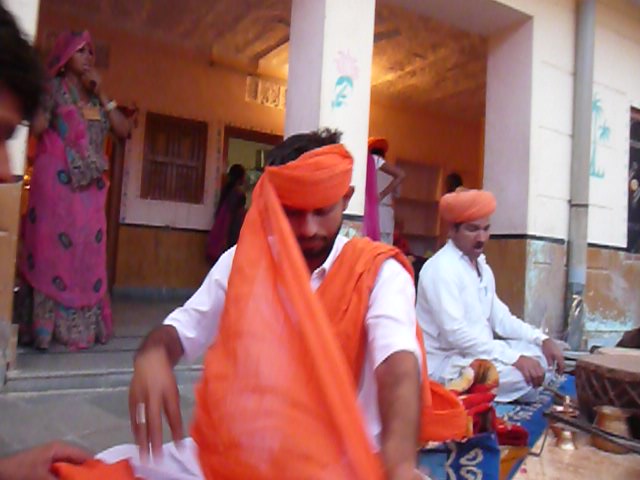
The ragas are beautiful, I love their sounds. Can you tell us anything about them?
Originally there were more than 36, today we still know 20 ragas. I know Nine myself. A raga consists of five to six songs and lasts about 20 minutes. One evening we sing about four raga. They are not songs in a language with a certain content, but simply combinations of five different tones that soothe and empty the mind.
Are there certain rituals before a dance?
We are washed, gather, receive the blessing of Jasnath through our guru ji. Sometimes we recite the mantra: “Om Badot Shimbhu Sirjanhar! Sarve Roop Tiyo Vistar, Paaye Dharti Sees Genar, Taa Shimbhu Ne Nimaskar.” With this mantra we clean the environment of the bad and impurities. There is also a puja before our dance.
You have lived here for a very long time, do you not miss your family or a life with your family?
No. My family comes to visit me twice a year and I also go home at least once a year. I have five brothers. Four of them are already married and all live together with their wives and children in one house, there is not so much space anyway. I like my freedom here in the ashram, I like my work.
Do you have a plan for how long you want to live here?
No. No idea. Maybe forever, maybe for a few more years. I don’t plan. For now, it’s good. I probably won’t always be in the ashram, but dancing and singing will accompany me all my life!
And then, do you want to get married? You are well above the average age to get married in Rajasthan.
I do not know that and I do not want to say anything about it. Living only with God is fine for me.
(In Rajasthan marriages of fifteen-year-olds and disciples is nothing unusual is here. The children are married and only when they grow up does the bride move to the man’s family. Many men here have difficulty finding a woman, because there is a bigger number of women here. A woman’s life in Rajasthan is still not equalized to a men’s, so the female fetuses are killed before birth. For 100 men, there are 85 women only.)
Thank you for the conversation!
Here you can watch a video about Jogesh Fire Dances!


